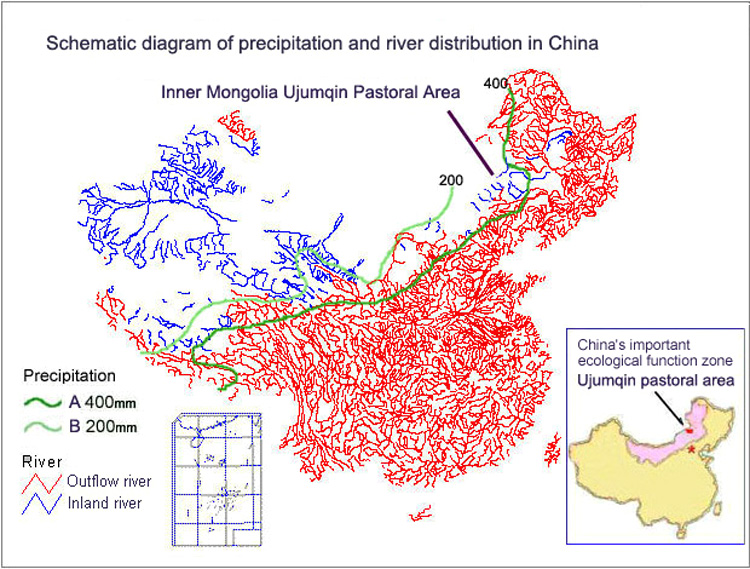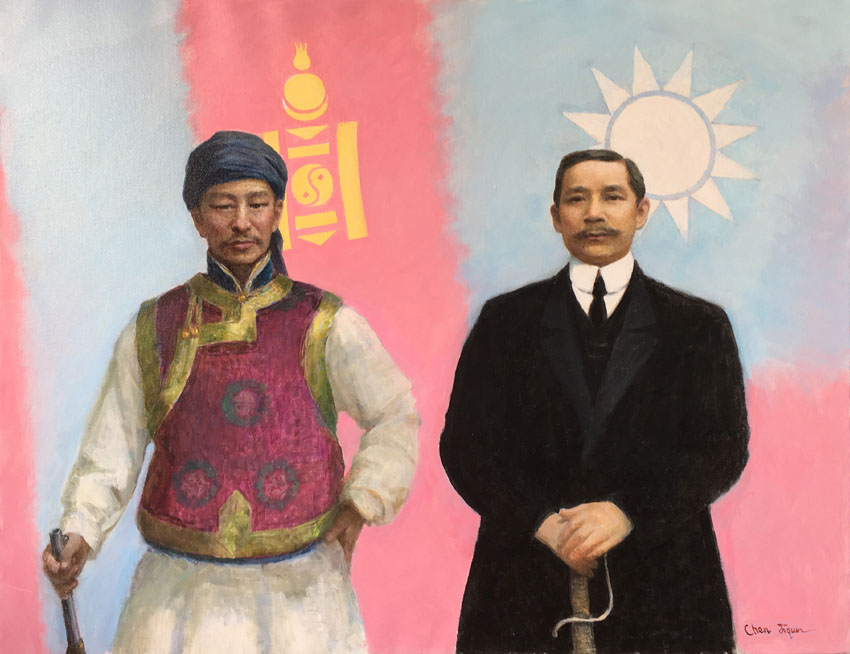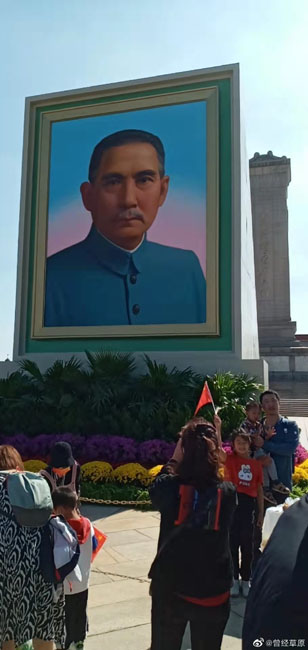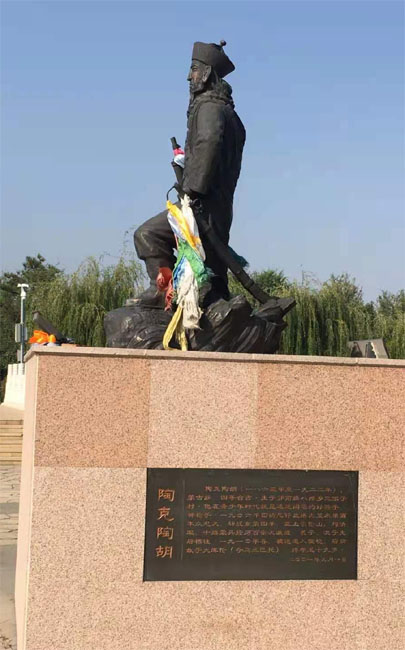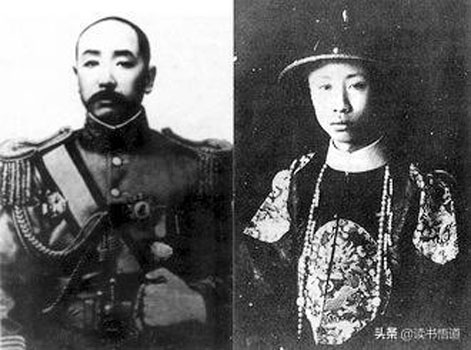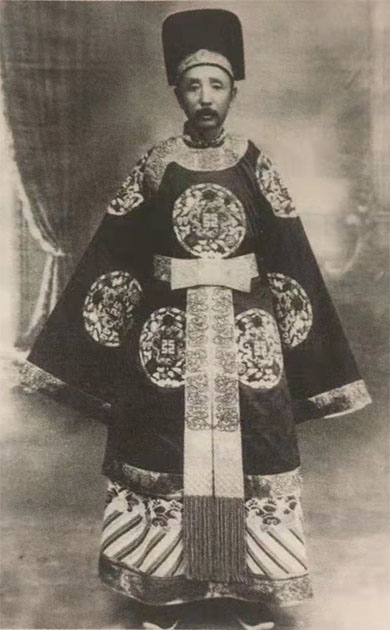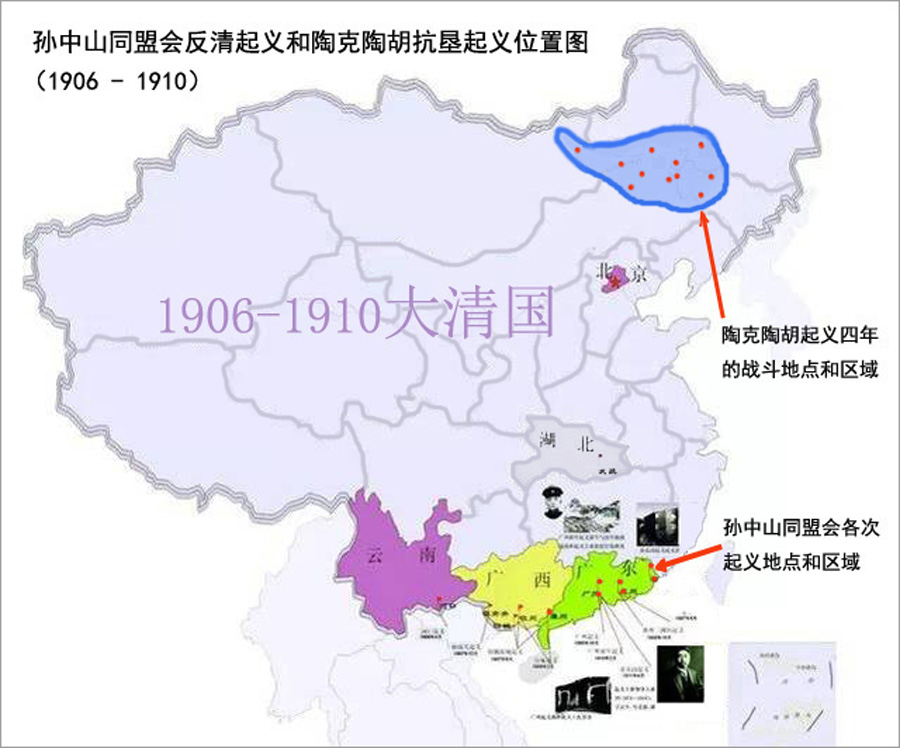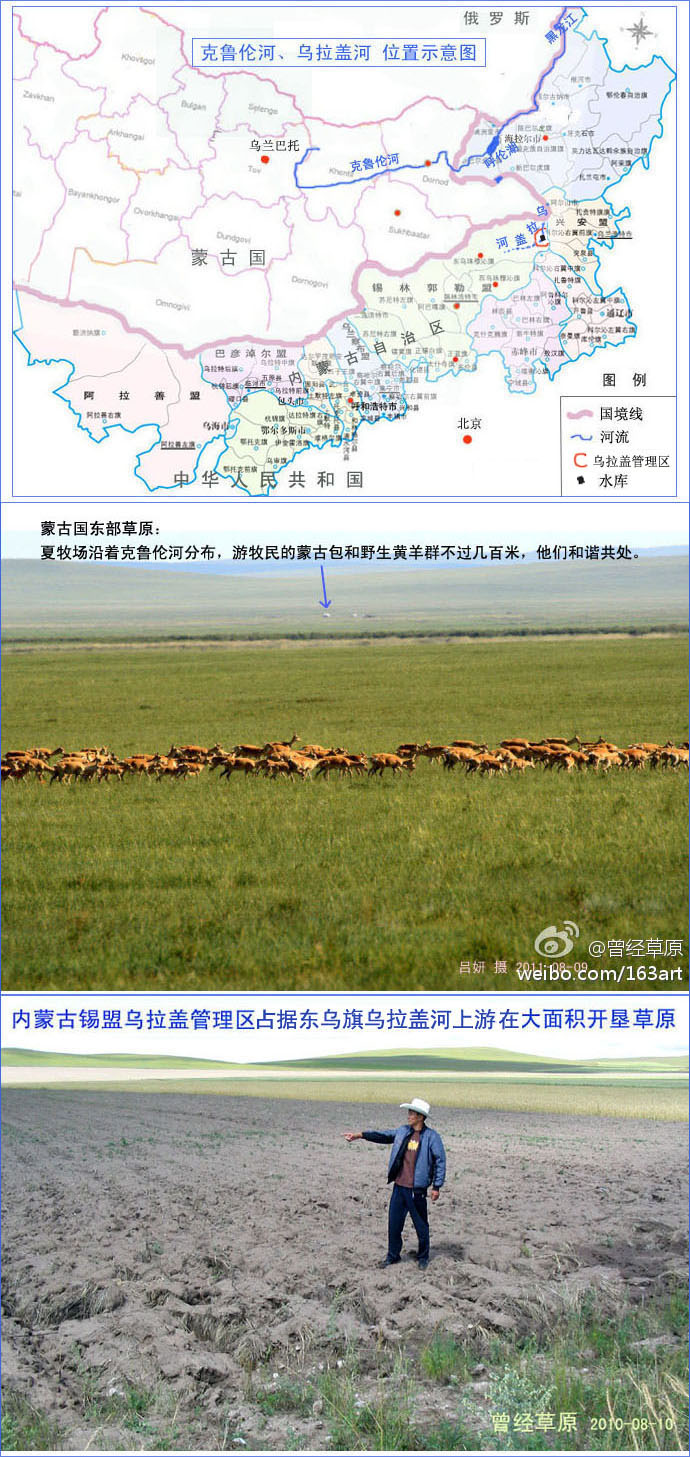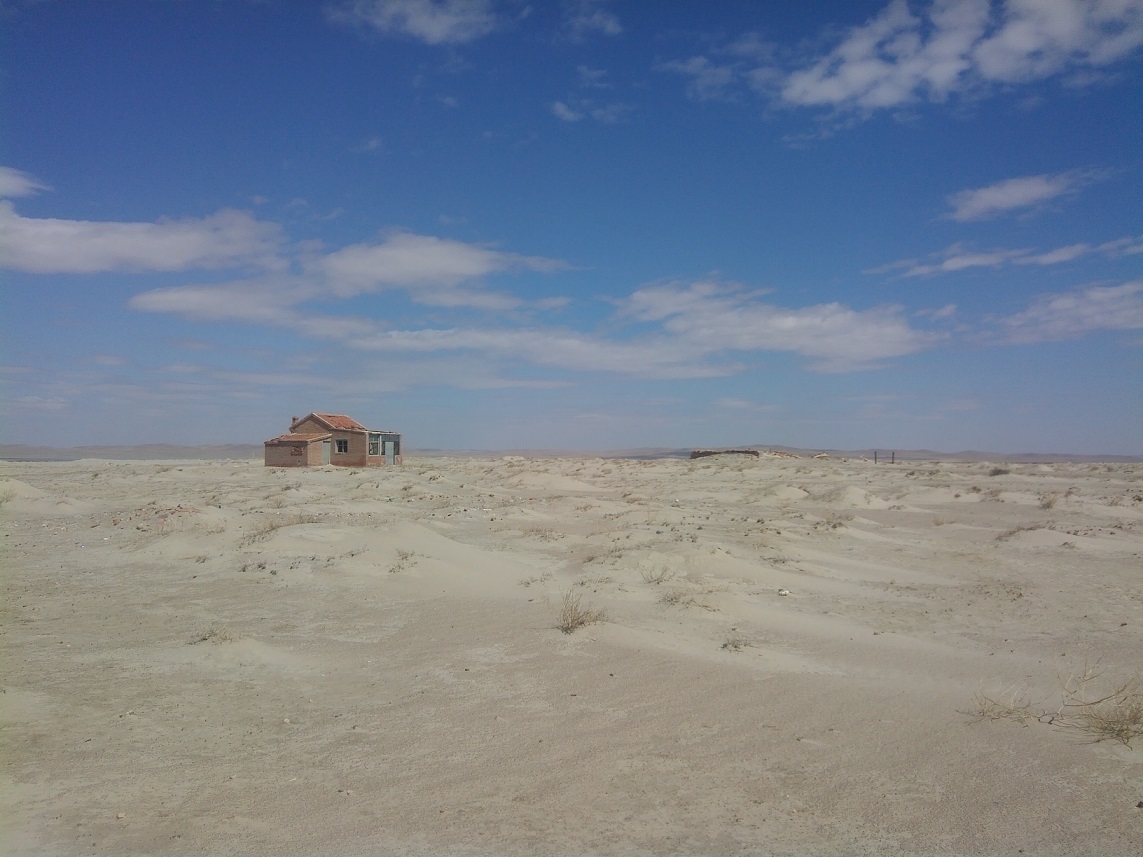|
||||||||||||||||||||||||||||||||||||||||||
|
At the beginning of the last century, at the
end of the Qing Dynasty, two great uprising heroes appeared in the South
and North, Sun Yat-sen and To-k-tao-hu. Their uprising shook the rule of
the Qing Dynasty and contributed to the demise of the autocratic rule
that lasted for more than two thousand years.
The leader of the anti-Qing uprising in the early 20th century-Nansun Beitao, anti-Qing rejuvenation and a century of ecology November 12, 2016 Figure 1. Anti-Qing leaders Sun Yat-sen and Tok Taohu, and the political background of farming civilization and nomadic civilization after the fall of the Qing Dynasty. (oil on canvas)
Figure 4. Zhang Zuolin, leader of the Qing Dynasty
There were two leaders of China’s anti-Qing uprising from 1906 to 1910, Sun Yat-sen (1866-1925) in the south and Taoketaohu (1864-1922) in the north. Together, their uprisings shook the rule of the Qing Dynasty-Sun Yat-sen raised funds in Foreign countries have commanded the Southern Uprising nearly ten times, with repeated defeats and battles; Tauktauhu fought in
In the 17th century, the Qing Dynasty (Later Jin Dynasty) invaded the interior of the Great Wall and occupied the territory of the Ming Dynasty. At the end of the 17th century, Emperor Kangxi of the Qing Dynasty suppressed Geldan and obtained the imperial seal of the Northern Yuan Dynasty. From then on, the Qing Dynasty occupied the territory of the Ming Dynasty in the interior of the Great Wall and also occupied the grassland land of the Northern Yuan Dynasty. The Mongolian tribes were divided into three major administrative divisions: Inner Mongolia 49 Banners and Outer Mongolia. Toktahu was born in Guoerluosqianqi, Zhelimu League, Inner Mongolia in Beginning in 1902, the Qing dynasty used the pretext of "immigrants to real borders" in East Mongolia, adding yamen, sending
"In 1905, Tauktahu was in conflict with the Qing government because of his opposition to the reclamation of grasslands. In the early morning of September 23, 1906, Tauktahu led his three sons, Deliger, Naima, Nutktu, and his relatives. Eight people including Danzhab, Hada, Zamsu and Fusang, as well as 32 people including righteous friends Saijilahu, Nashunbatu and Erdenidalai, formally sworn uprising, and then attacked Erlong Suokou. The Bureau of Reclamation had seized more than 20 guns. It also raided Maolin Station at 11 o'clock that night, captured and executed 12 Japanese surveying and mapping personnel and the defending soldiers, and Mongolian General History Taoketao's Armed Anti-Reclamation >
From then on, the Tauktao Hu Rebel Army fought against Xu Shichang, governor of the three eastern provinces of the Qing Dynasty, Zhang Zuolin, guard envoy, and dozens of soldiers from Inner and Outer Mongolia. In 1910, in the battle of Qaidam in Guriban in the northern part of Ximeng, Inner Mongolia, the eldest son of Toktahu, Deliger, died in battle. Toktahu brought 48 people into the Buryat Mongolian tribe on Lake Baikal in Russia. In 1911, Tauktahu arrived in Kulun, the capital of-------------------------------------------------------------------
Schematic diagram of the positions of Tauktaohu and
Sun Yat-sen Alliance in the uprising of Manchu and Qing Dynasty
(1906-1910)
The Qing Dynasty died in 1911 and the Republic of China In 1911, Kharkha Mongolia declared its "independence" and Tauktahu
For ten thousand
years, there have been two different ecosystems and organisms in central
Asia bounded by a 400 millimeter precipitation line: forest ecosystems -
hundreds of coniferous and broad-leaved forest belts, as well as deer,
elephants, tigers, and rhinoceroses (as evidenced by Henan's ancient
name 'Yu'); Grassland ecosystem - low growing thousand species of
leguminous plants in the Poaceae family and wild animals such as yellow
sheep, marmots, wolves, etc. Figure 2: Remote sensing photo shows that the forest ecosystem in North China has basically disappeared -
Centennial ecological comparison For ten thousand years, there have been two different ecosystems and organisms in central Asia bounded by a 400 millimeter precipitation line: forest ecosystems - hundreds of coniferous and broad-leaved forest belts, as well as deer, elephants, tigers, and rhinoceroses (as evidenced by Henan's ancient name 'Yu'); Grassland ecosystem - low growing thousand species of leguminous plants in the Poaceae family and wild animals such as yellow sheep, marmots, wolves, etc.For 3000 years, humans in forest ecosystems have cultivated forests and formed agricultural civilizations mainly by feeding on several plant seeds. To this day, almost all of the original forest ecosystems and wildlife have disappeared. Here are the results of our comparative investigation of grassland ecology between China and Mongolia over the past decade, as well as some collected ecological protection data:
Figure 3. Comparison of Grassland Scenery in the Krulun River (Upper Heilongjiang) of Mongolia and Desertification Grassland in the Ulagai River Basin of Inner Mongolia
- Comparative Study on Grassland Ecological Protection between China and Mongolia, along with Case Comparison Photos: 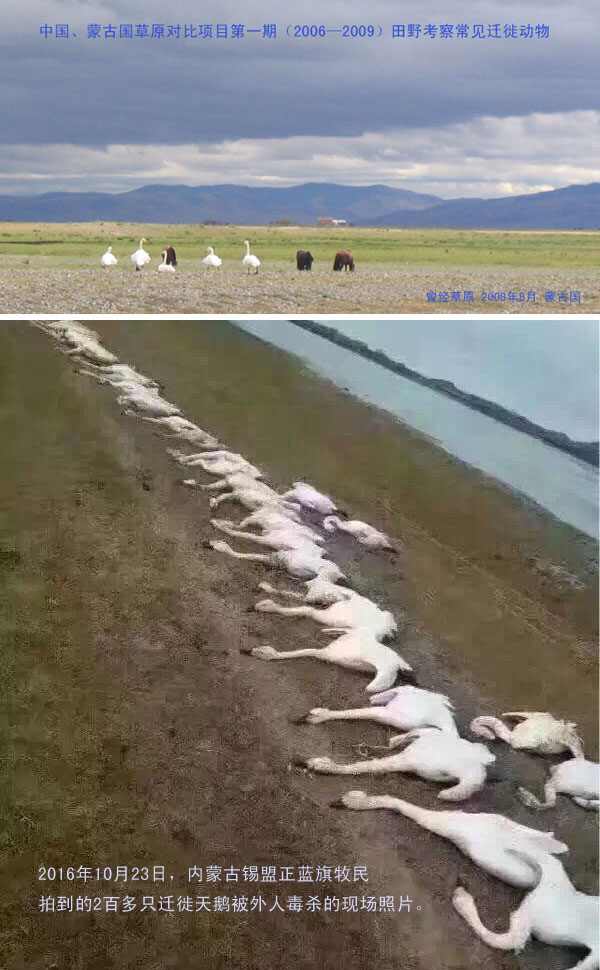 On Figure 5, the scenery of swans in Mongolia (2011) Photo 5: Over 200 swans poisoned by outsiders in Zhenglan Banner, Inner Mongolia (2016)
comment To commemorate the great anti Qing figures, firstly, we need to study and restore history, and learn from it; Secondly, we must continue to follow the "global trend" - advocating ecological civilization, implementing constitutionalism, protecting biodiversity, and advocating sustainable development. We commemorate the great men who fought against the Qing Dynasty. First, we should study and restore history and take history as a mirror. Second, we should continue to follow the "global trend" -- advocating ecological civilization, implementing constitutional government, protecting biodiversity and advocating sustainable development.
Reference material:
1. General History of the Mongolian Ethnic Group: The Armed Anti Reclamation Uprising Led by Tao Ketao ", Institute of History, Inner Mongolia Academy of Social Sciences, Ethnic Publishing House, 2001 edition 2. Tao Ketao's Deeds "(compiled by Yidu Hesig, Inner Mongolia People's Publishing House, 1962 edition) 3. Comparative Study on the Development Trends of Mongolian Plateau Nomadic Culture "(Yi Jin, Chen Jiqun, Wu Yunqimuge) 4. Mongolian Gazetteer "(written by Takahisa Kashiwara and Junichi Hamada, published in 1919 during the eighth year of the Taisho era) 5. The Legend of Chagan Lake and its Tales from Gorlos (written by Sukhbaaru, Wuyin, and Shandan) 6. Collection of Papers on the Joint Expedition of Grasslands between China and Mongolia (formerly known as Grassland Website) http://cnsteppe.com/go1_steppestudy.htm 7. CCTV Focus Interview: Wetlands are Losing, June 23, 2015 http://www.chinanews.com/m/shipin/2015/06-23/news578987.shtml?from=singlemessage
|
||||||||||||||||||||||||||||||||||||||||||
